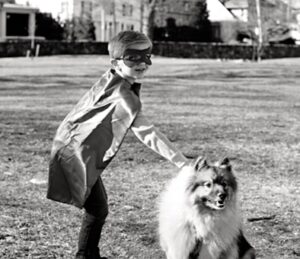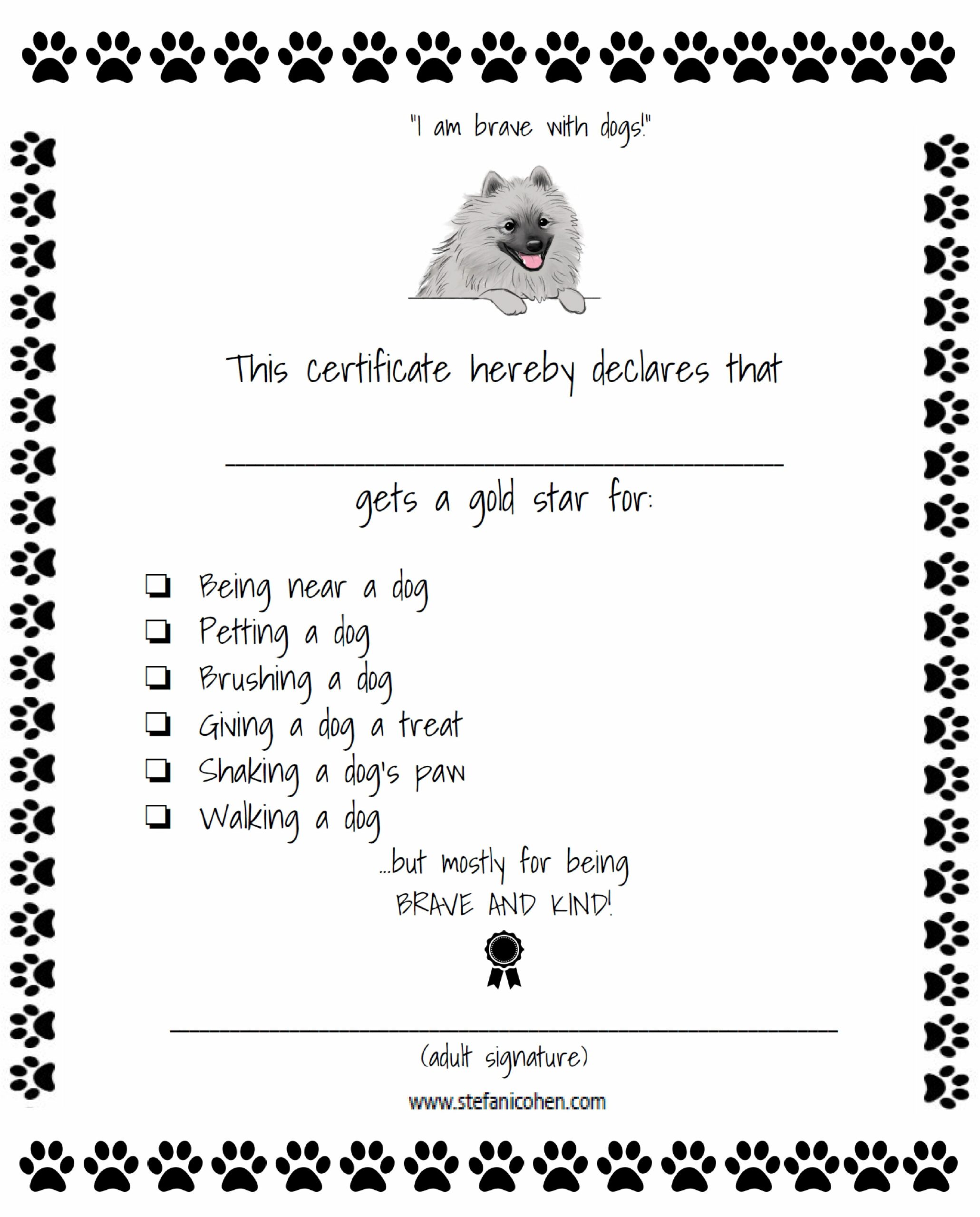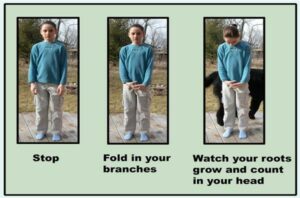Barks Blog
Fear of Dogs: Expert Tips for Trainers
This article discusses learning to understand how a fear of dogs develops, and presents some strategies that will gradually help reduce that fear

By Stefani M. Cohen LCSW
As dog trainers and pet industry professionals, you have most likely encountered someone who is afraid of dogs. You may even have received a call that the family just got a new puppy or dog and their child is afraid of him/her.
I thought it would be helpful for you to have a general understanding of how the fear develops and then provide some strategies to gradually help reduce it (and as I write this it occurs to me that there will probably be many similarities with how you might help a fearful dog).
Cynophobia

The fear of dogs is also known as cynophobia. It comes from the Greek words for dog (kyon) and fear (phobos). It is an anxiety disorder and is listed under animal phobias in psychology manuals.
The fear can range from mild to debilitating. Physical symptoms such as racing heart, sweaty palms, urge to cry or scream etc. usually accompany the feeling. While my book, Overcoming Your Child’s Fear of Dogs: A Step-by-Step Guide for Parents, and this article are geared for children who are afraid of dogs, the general information applies to adults as well.
The fear of dogs develops in four ways. Sometimes it develops as a combination as well.
- By having a personality and temperament prone to developing fears.
- By having a direct negative experience with a dog.
- By observing someone having a negative experience with a dog.
- By hearing about or being taught about negative experiences involving dogs.
As I’m sure you’re aware, not everyone who has a negative experience with a dog becomes afraid. Having numerous positive experiences with dogs adds a protective layer to becoming afraid – but it is not a guarantee.
Many of us know someone who is afraid of dogs. The fear of dogs affects millions of people, many of them children. When it is not addressed it can significantly impact the child and the family’s daily life.
Some phobias, such as the fear of heights or spiders, do not impact people the same way. This is because it is possible to go through life avoiding these triggers. But it is virtually impossible to avoid dogs in daily life, leaving children who are afraid of them trying to avoid them at all costs. Sometimes kids may even put themselves at risk by running into traffic to avoid encountering a dog on a sidewalk or in a park.
Early Intervention
When a child has a strong fear of dogs it is important to address the fear as soon as possible, because the longer it goes on, the more entrenched it becomes. If left untreated, cynophobia can turn into a significant source of anxiety, family discord and social stress.
In many cases, children do not grow out of this fear. Adults who are afraid of dogs are often better at avoiding dogs and at managing their stress and fear because they have had more life experience but, it still impacts them considerably.
I worked with a 35-year-old mother, Pria, who had been afraid of dogs all her life. Pria told me her 3-year-old daughter was showing signs of being afraid of dogs and she did not want her to suffer the way she has her whole life. I took my therapy dog, Fozzie, over to meet them and we went through graduated steps of looking at the dog, touching the dog, asking the dog to sit, etc.
The little girl moved through the steps quickly and Pria told me her own level of fear just from looking at the dog was very high. We did some breathing exercises and she was finally able to pet Fozzie with one finger. She burst into tears of relief and told me she felt so proud of herself. By the end of the 45 minutes, she was petting him with her whole hand, brushing him, and able to sit close to him.
Fear Development
Many years ago, my own daughter, at the age of 4, became so afraid of dogs that she refused to go on playdates or family outings because she was petrified that she might see a dog.
As far as we could tell, nothing negative had happened to her with a dog but she fit the “personality type” of fear development. I searched high and low for information that could help. There was very little out there.
Using my parenting coach hat, my Licensed Clinical Social Worker (LCSW) therapist hat, my mom hat, and my dog lover/humane educator hat, I created my own 10-step method. I call this the OFOD Protocol or the Overcoming Fear of Dogs Protocol.
My daughter overcame her fear via this technique and now is a dog lover. Two years ago, I wrote the book that I wish was available when my daughter was struggling with her fear.
Exposure Therapy
Many mental health professionals see clients with cynophobia but what sets my work apart is that I use a real dog in the exposure therapy. I get calls from all over the country asking if I know anyone who does what I do so they can help a fearful family member. I usually don’t know anyone and it is a source of frustration that I cannot help more people.
This is where you, as pet industry professionals, can help!
Each exposure session needs the client (the adult or child with cynophobia), a helper dog, a handler, and if desired, a mental health professional. Many therapists work with kids who have anxiety and if they are helping with cynophobia they can help guide the session.
You may be able to act as the handler and you probably know a suitable dog. The dog should be calm, dependable, and well-trained, and must remain on leash and under the handler’s control at all times.
The handler should familiarize themselves with cynophobia and exposure therapy (shameless plug for the book!). They should be respectful of both the client and the dog and be calm and willing to go at the client’s pace. In this way, the fearful person can relax because they trust you and the dog and they can begin to overcome the fear through a hierarchy of exposure exercises.
Confronting Fears
Exposure therapy is the preferred treatment for cynophobia. According to the American Psychological Association (n.d.) it was “developed to help people confront their fears. When people are fearful of something they tend to avoid the feared objects, activities or situations.”
By avoiding these triggers people never learn to overcome the fear. With exposure therapy, a person learns to face their fear in a safe and predictable environment where the exposures start with the least threatening and work up to more challenging situations. In this way the person is desensitized to dogs and learns that they don’t have to fear them. I imagine there are a lot of similarities in the way you might handle a fearful dog and gradually expose them to a feared object.
My technique uses exposure therapy with a real dog to provide children with safe, supervised, and positive experiences so they learn to feel safe and in control around dogs.
Exposure therapy is the best approach to help children overcome their fear of dogs. The goal is to gradually build the person’s confidence so they can handle more frequent and longer exposures to the situation that generates their fear.
When using this technique to treat a child’s fear of dogs, the child’s fears should gradually diminish as their controlled exposure to well-behaved dogs increases.
The exercises outlined in my protocol go from just being near a dog to eventually petting and walking a well-behaved and friendly dog. This can take as little as one session or as many as five or six sessions. As an added incentive I have a certificate that helps motivate kids to step out of their comfort zone and complete the exposure therapy steps. I also have a superhero cape that says Captain Pawsitive that they can put on after they have petted the dog!

Education
We are afraid of things we don’t understand so there is also a big educational component to helping people who are afraid of dogs.
Again, dog trainers and behavior consultants are well-suited to educating people about how dogs communicate and when it’s safe to interact. We need to teach kids to respect dogs and to teach them about dog body language signals that say, “I’m uncomfortable” or “I need space.”
In this way children can avoid an unpleasant interaction with a dog, or worse, a dog bite. As parents, we teach kids how to look both ways before crossing the street, to “stop, drop and roll” in a fire and not to touch the stove. But most parents don’t teach children about dogs and how to know when it’s safe to approach and greet a dog and when it’s best to stay away. Children should also know how to “Be a Tree.”

Empathy
When you meet someone who is afraid of dogs, there are a couple of things to keep in mind:
- The fear is real and it is very important not to minimize it.
- The person needs to trust the handler and the dog (and the clinician if one is involved) so they can let their guard down and see and feel that they are safe.
Overcoming the fear is a process and forcing someone to face their fears will almost always backfire. Well-intentioned people may try to push their dog onto a fearful child and say something like, “but look how friendly he is.” This erodes trust and the child will most likely become more frightened. The fight or flight response kicks in and the fear is magnified.
Benefits of Overcoming Fear
There is much to be gained when a child faces their fears. Many children have shared with me that they have felt ashamed of their fear of dogs. Well-meaning adults and friends often pressure kids to interact with dogs without taking the child’s needs into account.
It is very important to acknowledge that their fear is real and to go at the pace with which your child feels comfortable. Kids feel a lot of pride when they face their fears and are also relieved that they no longer have to worry if they will encounter a dog.
When a child overcomes their fear of dogs, they gain additional benefits such as:
- Self-confidence
- Self-esteem
- Respect
- An ability to cope with anxiety and fear
- The confidence to speak up about what they need
- Greater awareness of their feelings
Not to mention opportunities to interact, have fun, and bond with dogs!
References
American Psychological Association. (n.d.). What is Exposure Therapy?
Doggone Safe. (2022). Be a Tree
ispeakdog. (n.d.). Body Language Gallery
Stefani M. Cohen is a Licensed Clinical Social Worker (LCSW) in private practice in Westchester County, New York who has a main focus on parent coaching and education, specializing in anxiety in children with a sub-specialty in helping children overcome their fear of dogs. She has a bachelor’s in sociology from William Smith College in Geneva, New York, and a master’s in social work from New York University, New York.
As a parenting expert, Stefani has over 30 years of experience working with parents to help them develop and implement positive parenting strategies to maximize their children’s social and emotional development. She also works individually with children to help them learn to cope more effectively with “big” feelings, such as worry, fear and anger. She has created and facilitated numerous parenting support groups and workshops. Topics have included: anxiety in children, parenting special needs children, positive limit-setting, and sibling rivalry. In addition, she has presented many teacher training sessions on recognizing developmental red flags and behavioral issues in children.
Stefani has developed a niche of helping children who are afraid of dogs overcome their fear through exposure therapy using a live dog. Together with her canine assistants, she has also done presentations for school children and scout troops on humane education, kindness to animals and bite prevention. Her Overcoming the Fear of Dogs Protocol (OFOD), designed to help children to feel safe and comfortable around dogs, is featured in her book, Overcoming Your Child’s Fear of Dogs: A Step-by-Step Guide for Parents. While the book was written for parents, it can be used by therapists, dog trainers, and basically anyone who wants to help someone feel brave with dogs.
In 2013, Stefani received an award as a Recognized Community Builder from the Jewish Community Center on the Hudson (Tarrytown, New York).

